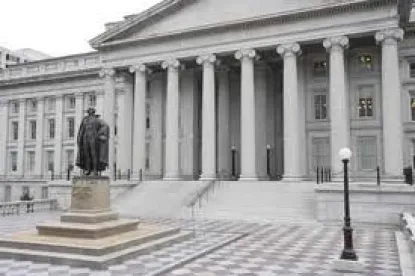The United States Department of the Treasury (“Treasury”) recently announced that a second application round has opened for investments in eligible Minority Depository Institutions (“MDIs”) and Community Development Financial Institutions (“CDFIs”) through its Emergency Capital Investment Program (“ECIP”). The second application round presents another opportunity for MDIs and CDFIs that did not receive an investment during the first application round to receive an award to help increase their impact within the communities they serve. Treasury expects to invest between approximately $160 million and $340 million during the second application round.
Overview of ECIP
ECIP was created by the Consolidated Appropriations Act, 2021. It is intended to provide capital to MDIs and CDFIs to aid in their provision of financial products to small and minority-owned businesses and consumers in low-income and underserved communities that were disproportionately affected by the COVID-19 pandemic. Treasury’s investments take the form of preferred stock or, for mutual corporations, S corporations, and credit unions, subordinated debt. The terms of the investments are attractive, especially given the current rising interest rates environment – investments will have no dividends or interest payable or accruing during the first two years post-investment, and dividend or interest rates will be capped at a 2% rate for the remainder of the investment. ECIP recipients can further lower their dividend or interest rate during the term of the investment through “qualified” and “deep impact” lending in certain target communities, as defined by Treasury.
As of Sept. 21, 2022, Treasury has made $8.28 billion in investments to 162 qualified financial institutions across the United States during the first application round.
Second Application Round Highlights
Treasury has released the application for the second round. As part of the application, applicants must submit an Emergency Investment Lending Plan (“EILP”) that:
-
Details the applicant’s plan to increase its lending by 30% or more over the amount of its lending during the past two fiscal years directly to low-to-moderate income borrowers, other targeted populations, or a combination of the two;
-
Describes how the applicant's strategy and operating goals will address community development needs;
-
Includes a plan to provide community outreach and communication; and
-
Confirms the applicant’s agreement to adhere to requirements on preferred stock and other financial instruments issued under the program set forth in Section 104A(b) of the Community Development Banking and Financial Institutions Act of 1994.
Applicants must submit the application and the EILP in the ECIP Program Portal on Treasury’s website.
To be eligible for an ECIP investment, applicants must be an MDI or a CDFI that is:
-
A federally insured depository institution that is not controlled by a bank holding company (“BHC”) or a savings and loan holding company (“SLHC”) that is also eligible for an ECIP investment;
-
A BHC;
-
A SLHC; or
-
A federally insured credit union.
An applicant relying on CDFI status for ECIP eligibility must:
-
Be certified by the CDFI Fund as of the date the institution’s ECIP application is submitted; and
-
Have submitted its application for CDFI certification no later than Sept. 30, 2022.
Any institution that submitted an application for CDFI certification after Sept. 30, 2022, will not be considered. An institution relying on MDI status for ECIP eligibility must have such designation as of the date it submits its ECIP application.
Applicants that were offered an ECIP investment in the first application round are not eligible to apply for an investment in the second round, regardless of whether they accepted the investment. Affiliates of applicants that were offered an ECIP investment in the first round are not eligible to apply in the second round. Applicants that applied for, but were not offered, an ECIP investment in the first application round may apply for an ECIP investment in the second application round if they are otherwise eligible to do so.
During the second application round, Treasury will prioritize applicants that:
-
Were ineligible to apply in the first round of funding but later became eligible to participate in ECIP OR serve geographies that are relatively underserved by recipients of the first application round; and
-
Show a strong track record demonstrating the capacity to execute their EILP, including the quality of the data provided in Question 1 of the application related to lending to low- and moderate-income or minority individuals.
Among prioritized applicants, Treasury plans to allocate funding to institutions that are assessed to have a higher capacity to execute their EILP and are more responsive to community needs, as determined using the factors outlined in the Application and Lending Plan Evaluation Form.
Applications for the second round are due on Jan. 31, 2023, at 11:59 p.m. ET. Treasury expects to begin approving second round ECIP applications beginning in early 2023.







 />i
/>i

